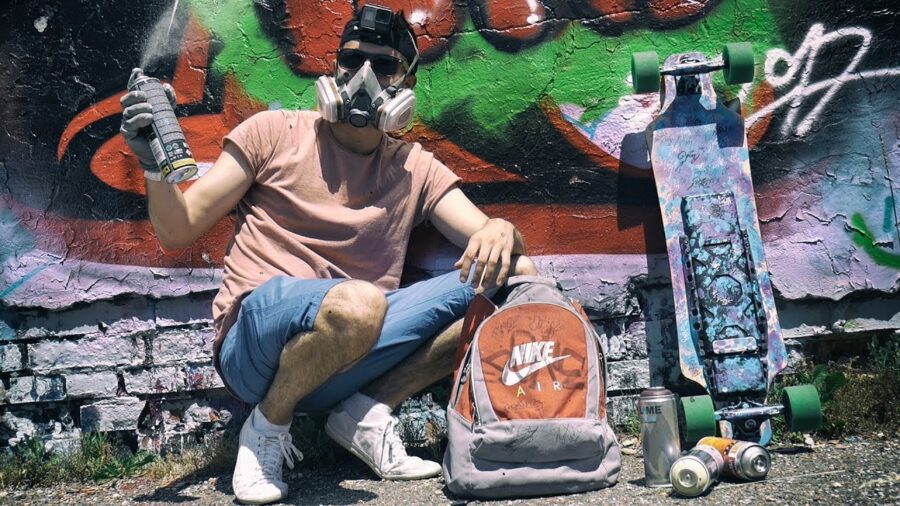Skateboarding and street art share a long-standing, dynamic relationship that is deeply intertwined with urban culture. Both disciplines emerged as powerful forms of self-expression and rebellion, carving out niches that celebrate creativity, individuality, and nonconformity. This vibrant intersection of skateboarding culture and urban street art has not only enriched the cultural landscape but has also transformed public spaces into living galleries that inspire artistic innovation and community engagement.
Origins and Evolution of Skateboarding and Street Art
Skateboarding first took shape in the 1950s and 1960s as an offshoot of surfing. With enthusiasts seeking to replicate the thrill of riding waves on urban concrete, skateboarding quickly evolved into a global phenomenon. Over the decades, it has influenced various aspects of culture, from fashion and music to graphic design and art. Similarly, street art emerged as a form of public expression that broke away from traditional art institutions. Initially seen as vandalism, graffiti has gradually gained respect as an important cultural movement that reclaims urban spaces and challenges established norms.
The evolution of these two movements highlights a shared spirit of nonconformity and a do-it-yourself (DIY) ethos. Today, both skateboarding and street art are celebrated for their raw authenticity and their role in transforming cities into interactive, creative hubs.
Skate Parks as Vibrant Canvases
Skate parks have become more than just venues for extreme sports; they are now vibrant canvases for urban street art. With their concrete surfaces and open layouts, skate parks offer an ideal setting for large-scale murals and graffiti installations. These public spaces become dynamic art galleries that reflect the pulse of urban life, drawing in skaters and art enthusiasts alike.
For example, many modern skate parks incorporate commissioned murals, graffiti art, and even installations designed by local artists. These collaborations infuse the space with energy and creativity, turning everyday urban environments into immersive visual experiences. The fusion of skateboarding and street art in these settings not only boosts the aesthetic appeal but also helps to revitalize public spaces, making them central to community identity and urban renewal.
Collaborative Projects and Cultural Crossovers
The relationship between skateboarding and street art goes beyond sharing physical space, it extends into collaborative creative projects that blur the lines between art and sport. Many street artists design custom graphics for skate decks, clothing, and accessories, embedding their distinctive style into the fabric of skate culture. These collaborations often lead to limited-edition collections and art-inspired skate products that are highly sought after by collectors and enthusiasts alike.
Live events and skate contests frequently feature live mural painting sessions, where local artists create on-the-spot works as a backdrop to skating performances. Such events serve as a platform for artists and skaters to showcase their talents and reinforce the strong ties between these two communities. This synergy not only elevates the visibility of street art but also promotes a vibrant exchange of ideas and aesthetics, highlighting the shared values of creativity, resilience, and individuality.
Urban Impact and Community Engagement
The influence of skateboarding and street art extends far beyond the confines of skate parks and urban walls. Together, they serve as powerful tools for social commentary and urban transformation. Public art installations, whether found on a skate park wall or a city building, invite viewers to question conventional norms and explore their own identities within a rapidly changing urban environment.
Both movements champion a grassroots, DIY approach to creative expression, encouraging individuals to reclaim public spaces and shape their communities. The visual language of graffiti and the athletic expression of skateboarding often intersect in ways that promote cultural dialogue and inspire social change. Local communities have embraced this intersection, recognizing it as a symbol of urban pride and a catalyst for neighborhood revitalization.
A Fusion That Redefines Urban Culture
The fusion of skateboarding and street art has reshaped urban landscapes and redefined contemporary culture. By merging the fluidity of graffiti with the kinetic energy of skateboarding, artists and skaters alike have created a unique cultural tapestry that is as inspiring as it is visually striking. This dynamic relationship not only highlights the rebellious spirit and creativity of urban subcultures but also fosters community engagement and public art innovation.
As this vibrant intersection continues to evolve, the combined influence of skateboarding and street art is set to inspire new generations of artists, athletes, and community activists. Their ongoing collaboration transforms ordinary public spaces into colorful expressions of urban life, a legacy that will undoubtedly influence the future of contemporary urban culture and creative expression.









